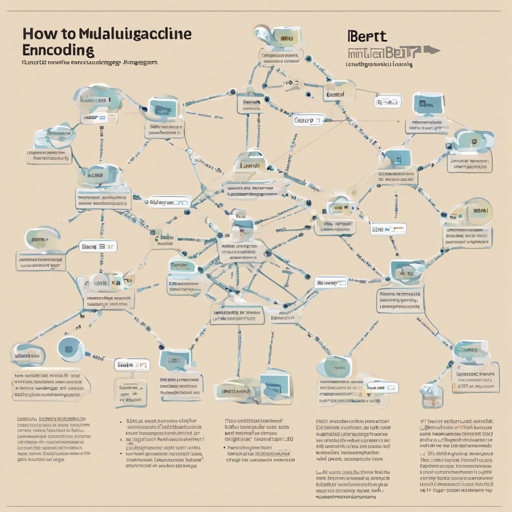In today’s interconnected world, the ability to understand and process multiple languages is essential. Multilingual BERT, a powerful representation-based sentence encoder, is designed to support an astounding 101 languages. This guide will walk you through how to make the most of this advanced model, allowing you to harness its capabilities for your applications.
What is Multilingual BERT?
Multilingual BERT is a sophisticated tool built on the principles of BERT (Bidirectional Encoder Representations from Transformers) to cater to multilingual needs. It comes equipped with:
- 101 Languages: Supports a wide range of languages for global applications.
- Cased: Maintains the distinction between uppercase and lowercase letters, which lends accuracy.
- Model Architecture: It has 12 layers, 768 hidden units, and 12 attention heads, totaling around 180 million parameters.
How Does Multilingual BERT Work?
Think of Multilingual BERT as a universal translator, much like a Swiss army knife. Each tool represents a language ability, all housed in one robust device. It effectively analyzes and processes sentences, giving us a means to communicate across language barriers.
To be more specific, Multilingual BERT is initialized with pre-trained weights and then fine-tuned on the English MultiNLI (Natural Language Inference) dataset as well as the development set of multilingual XNLI. This dual-fine-tuning process enhances its understanding of linguistic contexts, making it more effective in delivering accurate outputs.
How to Implement Multilingual BERT?
Here is a step-by-step guide to implementing Multilingual BERT using a popular machine learning library:
from transformers import BertTokenizer, BertModel
# Load the pre-trained multilingual BERT model
tokenizer = BertTokenizer.from_pretrained('bert-base-multilingual-cased')
model = BertModel.from_pretrained('bert-base-multilingual-cased')
# Encode some sentences
sentences = ["Bonjour le monde", "Hello world"]
inputs = tokenizer(sentences, return_tensors='pt', padding=True, truncation=True)
# Get the sentence embeddings
outputs = model(**inputs)
sentence_embeddings = outputs.last_hidden_state.mean(dim=1)
Troubleshooting
While working with Multilingual BERT, you may encounter some issues. Here are common troubleshooting tips:
- Model Loading Issues: Ensure that you have a stable internet connection for downloading the model files. If you face issues, try clearing the cache or reinstalling the library.
- Unexpected Output: Double-check your input format. Confirm that your sentences are appropriately tokenized and padded.
- Performance Concerns: If processing time is longer than expected, consider running the model on a machine with a dedicated GPU.
For more insights, updates, or to collaborate on AI development projects, stay connected with fxis.ai.
Conclusion
In conclusion, Multilingual BERT provides incredible tools for anyone looking to delve into multilingual sentence processing. Its robust architecture and adaptability to various languages make it an invaluable asset in today’s global environment.
At fxis.ai, we believe that such advancements are crucial for the future of AI, as they enable more comprehensive and effective solutions. Our team is continually exploring new methodologies to push the envelope in artificial intelligence, ensuring that our clients benefit from the latest technological innovations.

